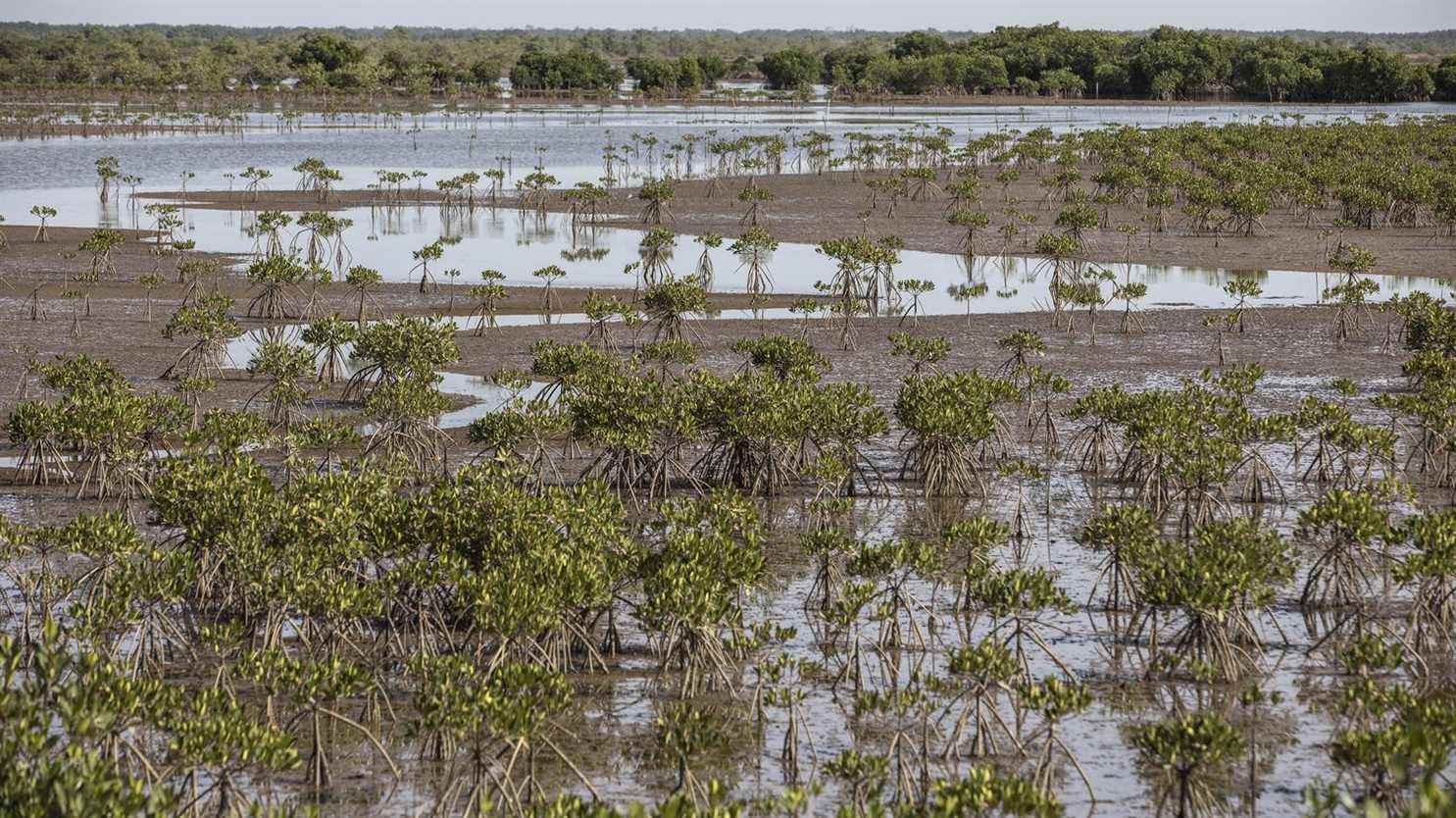Adaptation to climate change is the theme of the next report of the Intergovernmental Panel on Climate Change (IPCC) which will be released on Monday 28 February. In Senegal, these issues are particularly pressing when 40% of the mangrove area has disappeared since 1970. In the Sine Saloum delta in the south of the country, the populations are therefore trying to adapt and preserve this fragile and very important to them.
The mangrove, a wetland between land and sea, protects the coastline from coastal erosion and the salinization of agricultural land. But overexploited by man, it is threatened by drought and rising temperatures. “Without the mangrove, our village and our populations would disappear”worries
Marianne Ndong, mother of six children. “The mangrove retains water and helps protect our village. This is why we participate in its reforestation and restoration: to preserve our work and to protect our homes.”
Women who make a living from oyster farming have abandoned traditional harvesting methods, which involved cutting the roots of mangrove trees, where wild oysters hung, for a more sustainable technique of farming in clusters on garlands of shells immersed in brackish water. In return for their involvement in reforestation, they are supported in the development of income-generating activities.
The inter-village development association brings them, for example, new techniques and equipment. “We decided to move towards oyster farming, recount Mamadou Bakhoum, the coordinator of this association, because it allowed us to meet two objectives: women must generate money, and they must also solve an ecological problem. It has been proven that oyster farming is a fairly promising sector, but it is an activity that is not yet in the priorities of the Senegalese state.
It is in particular thanks to the International Fund for Agricultural Development, a UN institution, that the inhabitants manage to combine ecology, economic profitability and food security. “Today there is no really coordinated action for the protection, conservation and restoration of the mangrove”regrets Semou Diouf, in charge of the program in Senegal. “I think that we must, at the national and international level, put a lot more resources and investments in activities to adapt to climate change. This is what will save these ecosystems that support small producers.” Adapting then becomes urgent, while mangroves are disappearing five times faster than forests.
